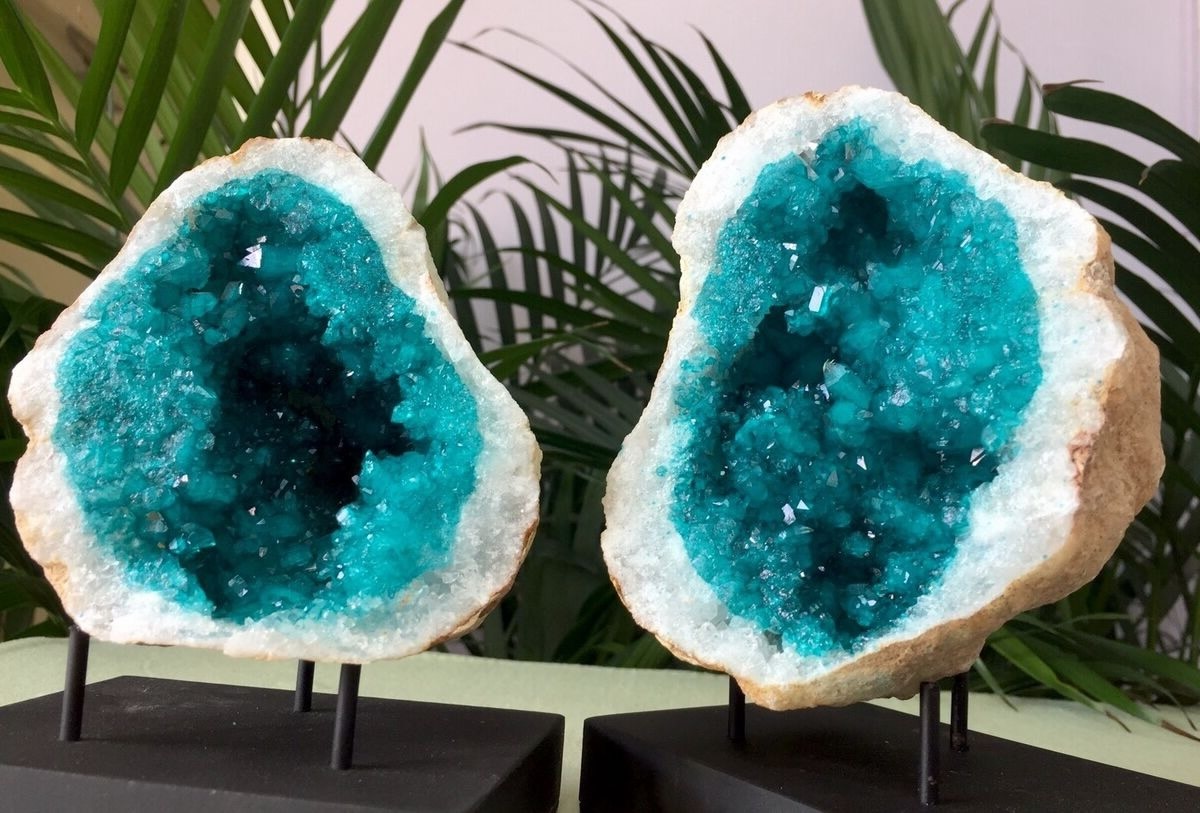
What are geodes? These seemingly ordinary rocks hide a sparkling secret inside. Geodes are hollow, spherical rocks lined with crystals or mineral matter. Found in volcanic ash beds, limestone, or even deserts, they form when mineral-rich water seeps into rock cavities and slowly deposits crystals. Geodes can contain a variety of minerals, including quartz, amethyst, and calcite. Their outer shell is often rough and unassuming, but cracking one open reveals a stunning interior. Collectors and geologists alike treasure these natural wonders for their beauty and the mystery of their formation. Ready to learn more? Here are 26 fascinating facts about geodes!
What Are Geodes?
Geodes are fascinating natural formations that look like ordinary rocks on the outside but contain a world of sparkling crystals inside. These geological wonders captivate both scientists and collectors alike.
- Geodes form in volcanic or sedimentary rocks.
- They start as bubbles in volcanic rock or as animal burrows, tree roots, or mud balls in sedimentary rock.
- Over time, mineral-rich water seeps into these cavities, depositing crystals.
Types of Geodes
Geodes come in various types, each with unique characteristics. Knowing the different types can help you identify them in nature.
- Amethyst geodes are filled with purple quartz crystals.
- Agate geodes have colorful, banded patterns.
- Quartz geodes are the most common and contain clear or white crystals.
How Geodes Are Formed
The formation of geodes is a slow process that can take millions of years. Understanding this process can make you appreciate these natural wonders even more.
- Geodes form when mineral-rich water flows into a cavity in a rock.
- Over time, the minerals crystallize, filling the cavity.
- The outer shell of a geode is usually made of chalcedony, a type of quartz.
Where to Find Geodes
Geodes can be found in various locations around the world. Knowing where to look can increase your chances of finding one.
- The United States has many geode-rich areas, including Iowa, Indiana, and California.
- Brazil is famous for its large amethyst geodes.
- Mexico is known for its colorful agate geodes.
Uses of Geodes
Geodes are not just beautiful; they have practical uses as well. From decoration to healing, geodes serve multiple purposes.
- Geodes are often used as decorative pieces in homes and offices.
- Some people believe geodes have healing properties and use them in crystal therapy.
- Geodes can be cut and polished to make jewelry.
How to Identify a Geode
Identifying a geode can be tricky, but there are some telltale signs to look for. Knowing these signs can help you distinguish a geode from an ordinary rock.
- Geodes are usually round or oval-shaped.
- They are lighter than solid rocks of the same size.
- The outer surface is often bumpy or rough.
How to Open a Geode
Opening a geode can reveal its hidden beauty. There are several methods to do this safely and effectively.
- A hammer and chisel can be used to crack open a geode.
- A geode cracker is a specialized tool that applies even pressure to split the geode.
- Some people use a saw to cut geodes, which can provide a cleaner cut.
Famous Geodes
Some geodes are so unique and beautiful that they have gained fame. Learning about these famous geodes can inspire your own geode hunting.
- The Empress of Uruguay is the largest amethyst geode in the world.
- The Crystal Cave in Ohio is filled with celestite geodes.
- The Pulpí Geode in Spain is one of the largest geodes accessible to the public.
Fun Facts About Geodes
Geodes have some interesting and fun facts that make them even more intriguing. These tidbits can make you the life of the party at your next gathering.
- The word "geode" comes from the Greek word "geodes," meaning "earthlike."
- Some geodes can be as small as a pea or as large as a basketball.
The Magic Inside Rocks
Geodes are like nature's surprise party. These unassuming rocks hide dazzling crystals inside, formed over millions of years. Found in deserts, volcanic ash beds, and even your backyard, geodes come in all shapes and sizes. They can be as small as a pea or as big as a basketball. The crystals inside can be quartz, amethyst, or even rare minerals like celestite.
Cracking open a geode is like opening a treasure chest. You never know what you'll find. Some people collect them, others use them for decoration, and scientists study them to understand Earth's history. Geodes remind us that beauty often lies beneath the surface. So next time you see a plain rock, remember, it might just be hiding a sparkling secret inside. Keep exploring, and who knows what wonders you'll uncover!
Was this page helpful?
Our commitment to delivering trustworthy and engaging content is at the heart of what we do. Each fact on our site is contributed by real users like you, bringing a wealth of diverse insights and information. To ensure the highest standards of accuracy and reliability, our dedicated editors meticulously review each submission. This process guarantees that the facts we share are not only fascinating but also credible. Trust in our commitment to quality and authenticity as you explore and learn with us.
